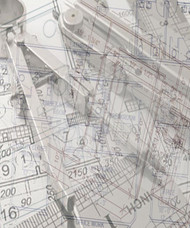A Complete Guide to Commercial Restroom Renovation: Meeting Restroom Requirements
Renovating or building a commercial restroom requires careful planning and consideration to ensure functionality, compliance, and a positive user experience. Whether you’re upgrading outdated facilities or starting from scratch, addressing essential restroom requirements is key to creating a safe, accessible, and efficient space.
Compliance with Restroom Requirements
Ensuring your commercial restroom meets all legal, safety, and accessibility standards is a critical part of any renovation or construction project. Non-compliance can result in costly fines, delays, and even reputational damage, so it’s essential to thoroughly review and adhere to the following guidelines:
ADA Compliance
The Americans with Disabilities Act (ADA) sets clear standards for restroom accessibility to accommodate individuals with disabilities. Key requirements include:
- -Accessible Stalls: At least one stall must be wide enough to accommodate a wheelchair, with grab bars installed on the side and rear walls.
- -Sink Height: Sinks must be mounted no higher than 34 inches from the floor, with adequate knee clearance for wheelchair users.
- -Mirror Placement: Mirrors must be installed with the bottom edge no more than 40 inches above the floor.
- -Signage: Restrooms must include clear, tactile signage indicating accessibility.
- -Fixture Protrusion: If any fixture, such as a hand dryer, is located in a passageway, it must protrude less than 4” from the wall.
Adhering to ADA guidelines not only ensures compliance but also makes your restroom more inclusive and user-friendly.
Plumbing and Building Codes
Commercial restrooms must meet local plumbing and building codes to ensure safety and functionality. Key considerations include:
- -Fixture Count: The number of toilets, urinals, and sinks must align with the building’s occupancy limits. For example, high-traffic facilities like stadiums and theaters require more fixtures.
- -Water Pressure: Plumbing systems must be capable of supporting adequate water pressure for all fixtures.
- -Drainage and Ventilation: Proper drainage prevents flooding, while effective ventilation reduces odors and prevents mold growth.
Check with local building authorities to confirm your project complies with all applicable codes in your area.
Fire Safety Requirements
Fire codes may impact restroom design, especially in larger facilities. Requirements might include:
- -Fire-Resistant Materials: Partitions and wall coverings may need to meet specific fire resistance ratings.
- -Emergency Exits: Clear access must be allowed to visible exits and the distance to the exits must meet local code. Restrooms in large facilities should not obstruct paths to fire exits.
Restroom Capacity Requirements
The size and layout of your restroom must align with its expected usage. Local ordinances often dictate how many fixtures are required based on:
- -The total number of building occupants.
- -The size and specific use of the building (e.g., office, retail, school).
Providing sufficient capacity ensures a smooth flow of traffic and reduces wait times, enhancing the user experience.
Health and Hygiene Regulations
Certain industries, such as food service, healthcare, and manufacturing, have additional health-related restroom requirements. Examples include:
- -Hand-Washing Stations: Food service facilities may need separate hand-washing sinks for employees, with clear signage indicating their use.
- -Sanitary Disposal Units: Healthcare and hospitality restrooms must provide proper disposal units for sanitary products.
Sustainability Standards
Many jurisdictions now require the use of water-saving fixtures to conserve resources and promote sustainability. Look for products certified by programs such as EPA’s WaterSense to meet these requirements while reducing operational costs.
Durable and Easy-to-Clean Materials
In a high-traffic commercial restroom, choosing durable and easy-to-maintain materials is essential to ensure long-lasting performance and minimize upkeep costs. Floors and walls should be made of water-resistant and non-slip materials, such as ceramic tile or epoxy flooring, to prevent damage and accidents. Stainless steel or solid-surface sinks and toilets are excellent choices for their durability and resistance to stains and vandalism. Similarly, restroom partitions should be constructed from scratch- and moisture-resistant materials to withstand heavy use while maintaining their appearance. By investing in high-quality, low-maintenance materials, businesses can reduce repair costs and keep their restrooms looking clean and professional with minimal effort.
Hygiene and Sanitation
Maintaining a high standard of hygiene and sanitation is a top priority in any commercial restroom renovation. Modern restrooms are increasingly incorporating touchless technology to minimize the spread of germs and improve user experience. Sensor-operated faucets, soap dispensers, and hand dryers significantly reduce touchpoints, promoting a cleaner environment for all users. Advanced hand drying systems, such as the Dyson Airblade or XLERATOR hand dryers, not only ensure fast and hygienic drying but also reduce waste compared to paper towels.
Additionally, restrooms should include proper waste management solutions, such as strategically placed bins for paper towels and sanitary products, to maintain cleanliness and streamline maintenance. Installing high-capacity dispensers for soap, paper towels, or hand sanitizers can further reduce refill frequency, ensuring the restroom remains fully stocked and operational. Regularly using easy-to-clean surfaces for counters, walls, and fixtures helps prevent the buildup of bacteria, mold, and grime, ultimately creating a more pleasant and sanitary restroom environment.
Water Efficiency
Water efficiency is a key focus in commercial restroom renovation, helping reduce costs and conserve resources. Modern fixtures, such as low-flow toilets, urinals, and dual-flush options, use significantly less water while maintaining performance. Sensor-activated flush valves, like Sloan flushometers, and touchless faucets ensure precise water usage by activating only when needed, reducing waste and improving hygiene.
For businesses aiming for sustainability, water-recycling systems and WaterSense-certified fixtures offer advanced solutions to meet environmental standards. By prioritizing water-efficient technologies, businesses can lower utility expenses, extend plumbing lifespan, and support eco-friendly practices.
Accessibility and Comfort
Ensure your restroom is comfortable for all users. Consider adding features such as:
- -Family-Friendly Spaces: Incorporate baby changing stations and family restrooms for added convenience. Learn if baby changing stations are required in your establishment.
- -All-Gender Restrooms: Provide inclusive options that accommodate diverse user needs.
- -Enhanced Ventilation: Proper airflow reduces odors and maintains a pleasant environment.
Long-Term Maintenance
Plan for easy upkeep to minimize operational downtime. Consider:
- -Accessible Maintenance Panels: Allow for quick repairs to plumbing and fixtures.
- -High-Quality Fixtures: Choose trusted brands like Bobrick, Bradley Corp, or World Dryer for reliable products.
Sustainability Considerations
Sustainability is a growing priority for businesses renovating or building commercial restrooms. Implementing eco-friendly practices and materials not only reduces environmental impact but also demonstrates a commitment to responsible resource management. Here are key ways to incorporate sustainability into your commercial restroom renovation:
- -Water-Saving Fixtures: Install water-efficient products like low-flow toilets, urinals, and faucets that significantly reduce water usage. Sensor-activated flushometers and touchless faucets ensure precise water delivery, preventing waste and improving hygiene. Look for WaterSense-certified products to meet efficiency standards and qualify for potential rebates.
- -Energy-Efficient Lighting: LED lighting is a smart choice for commercial restrooms. It uses less energy, lasts longer, and provides bright, high-quality illumination, enhancing the restroom’s functionality while reducing electricity costs.
- -Efficient Hand Drying Solutions: Replace paper towels with high-speed, low-energy hand dryers like the Dyson Airblade or XLERATOR. These dryers eliminate waste, lower energy consumption, and reduce maintenance costs associated with managing paper waste.
Conclusion
A commercial restroom renovation is a critical investment that impacts customer satisfaction, employee comfort, and overall facility functionality. By addressing essential restroom requirements and focusing on durability, efficiency, and design, businesses can create restrooms that leave a lasting positive impression.
Need expert help in selecting restroom fixtures and accessories? Berl’s specializes in high-quality products from leading brands to ensure your renovation is a success.

